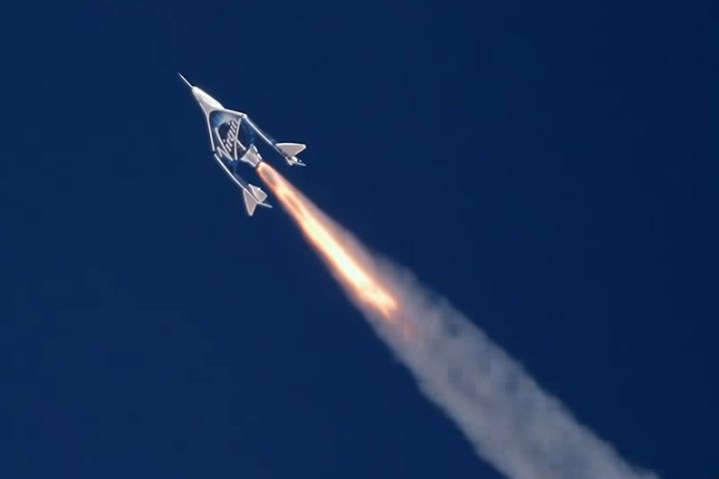
Virgin Galactic will embark on its first-ever commercial spaceflight in less than two weeks’ time, the company has announced.
The rocket-powered flight will mark the start of a new phase for Virgin Galactic following years of testing that saw numerous delays and also a crash that killed a pilot.
But after a couple of fully crewed test flights, the most recent of which took place last month, Virgin Galactic has revealed that a four-day window for its first commercial flight to the edge of space will open on June 27.
The flight, called Galactic 01, is a scientific research mission that will carry three crew members from the Italian Air Force and the National Research Council of Italy.
Galactic 02 will follow in early August, Virgin Galactic said, with monthly commercial flights expected to begin after that.
The company said that its first mission will “showcase the value and power of the unique suborbital science lab that Virgin Galactic offers,” while the second flight will bring Virgin Galactic’s “unique experience to private astronauts,” some of whom have forked out as much as $450,000 for the trip of a lifetime to the edge of space.
Virgin Galactic uses two aircraft for its flights. It begins with VMS Eve carrying the VSS Unity space plane and its passengers to an altitude of about 50,000 feet. At this point, Eve releases Unity, which then fires up its rocket engine, sending it to a peak altitude of about 282,000 feet (53.4 miles/86 km), about 9 miles short of the Kármán line which is widely considered as where space begins.
The passengers will then have a few minutes to marvel at the amazing views while floating around the cabin during a short period of weightlessness. Once safely back in their seats, those on board can enjoy the ride home, which culminates in a runway landing.
The only other comparable service is Blue Origin’s, which uses a sub-orbital rocket to blast passengers toward the Kármán line. It’s already achieved six successful space tourism flights after its first one in 2021, but a failed uncrewed mission in September last year prompted Blue Origin to suspend operations until further notice.


